Affiliate disclosure: This post may contain affiliate links. Please see our Privacy Policy.
Flour made from wild plants existed long before agriculture, and many of them have a lot more flavor and nutrition than storebought flour.
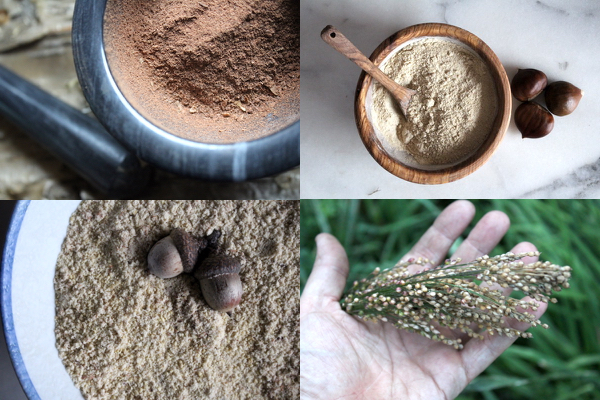
While leavened bread is a product of modern agriculture and civilization, flour predates agriculture and sedentary cultures. Look back a few thousand years, and you’ll find evidence of our ancestors foraging wild plants to process and grind into wild flour.
Lacking gluten, those wild flours didn’t knead up into a fluffy white bread loaf, but they were used to make all manner of flatbreads, biscuits, and porridge. Long after the widespread cultivation of wheat for flour, industrious peasants still processed wild plants into flour extenders.
Mixing wild flours into your existing stores helped bulk out poor harvests, added nutrition, and in some cases, actually helped prevent spoilage.
While you may imagine that wild flour must come from wild grain, there are quite a few ways to make flour from wild ingredients. Wild grains aren’t even the most efficient (or tasty) way to make it happen, but for simplicity, I’ll start there before proceeding on to more creative solutions.
Wild Grain & Seed Flours
As a general rule, wild grains are much smaller than cultivated grains, and they contain significantly more fiber (meaning fewer calories per pound). The small size and coarse texture can make it hard to process wild seed flours, at least in comparison to modern cultivated grains.
Millet
Mostly thought of as a staple grain in the developing world, millet isn’t a substantial part of the American diet. While you can find it in health food stores, most of the millet consumed in the US is found in wild birdseed for purely cultural reasons (not because it’s not delicious). The birds love it, and they also spread it far and wide.
You can find wild millet growing anywhere the birds happen to drop a few seeds, often under prime nesting locations. Sometimes just out of gravel or in cracks in the sidewalk. It’s remarkably resilient.
We harvested this prosso millet growing out of mostly shaded gravel, near a building that housed several robin’s nests.
A quick rub between your hands will remove the outer husk, which readily winnows away from the heavy grain. From there, it can be ground into homemade millet flour.
This traditional flour is a staple in Indian cooking, where it’s known as bajri or bajra, as well as North African food. It’s commonly cooked into flatbread, like Indian Bajri no Rotlo or West African Massa pancakes. It’s popular with gluten-free bakers, and back when I was running a bakery, I’d purchase it at the local health food store for millet flour cakes and scones.
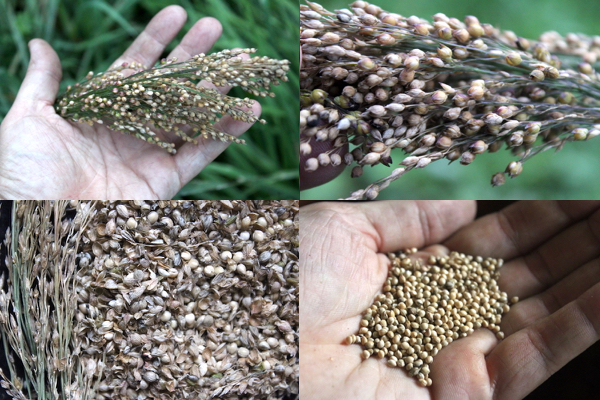
Dock Seeds
Wild dock (Rumex sp.) is a relative of buckwheat and will produce massive crops of seed each year. It’s considered incredibly invasive in many places, and it can be hard to eradicate.
It readily grows up through sidewalk cracks and all over abandoned lots, as well as any other area prone to disturbance.
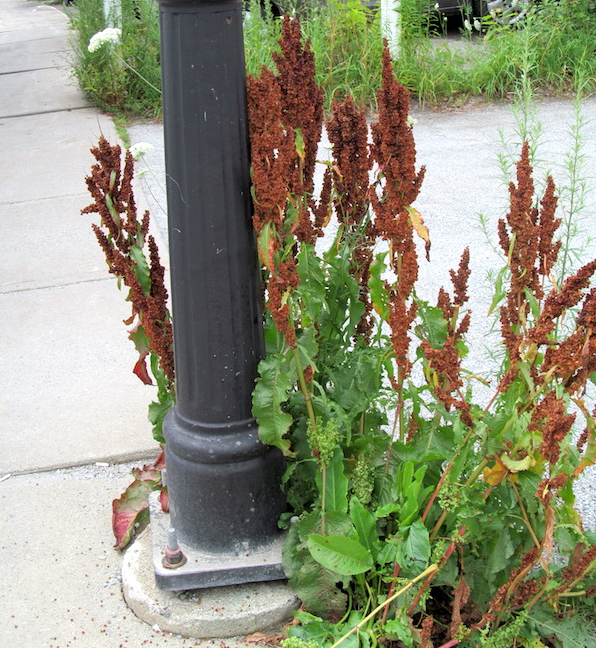
Dock seeds themselves are encased in a papery husk that’s very difficult to remove, and most people don’t bother. Just toast the whole seeds, then grind them into wild dock flour. The husks just add extra fiber.
Be warned though, dock seed flour can be a bit bitter, and it should only be a small portion of the total flour used in any given recipe. Even then, it’s honestly one of my least favorite wild flours. That could just be my bias though, as I’m also not a fan of dock greens and dock root (also both edible, and many people rave about them).
The sturdy dock stalks tend to hold onto the seeds all winter long, so it’s a good option for winter foraging when there’s not much else available.
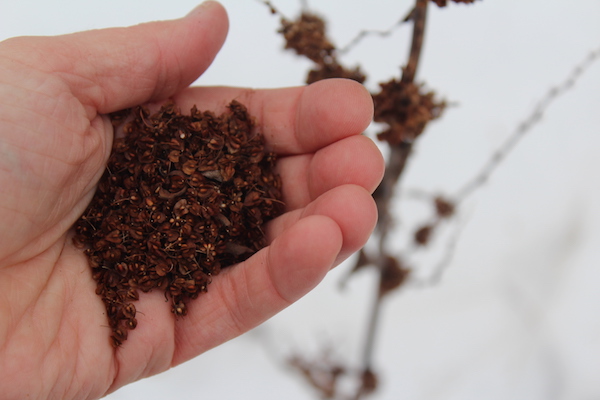
Lambs Quarter (Wild Quinoa)
One of the oldest grains eaten by humans, wild quinoa (Chenopodium album), is mostly ignored these days. Most foragers know it is lambs quarter or goosefoot, and it’s a delicious salad green similar to spinach when young.
Allow those plants to mature, and they’ll produce abundant crops of tiny black seeds, a bit smaller than modern cultivated quinoa.
Husking chenopodium grain can be a bit challenging, but not impossible if you have plenty of water on hand as the chaff floats. I walk you through the process in this article on foraging lambs quarter grain.
Once you have the husked grain, grinding it into flour is honestly not as easy as you’d think, but it can be done. The grains are quite small, and they’re much harder than storebought quinoa. I’d suggest just using this grain whole in baked goods, where it’ll add a pleasant crunch.
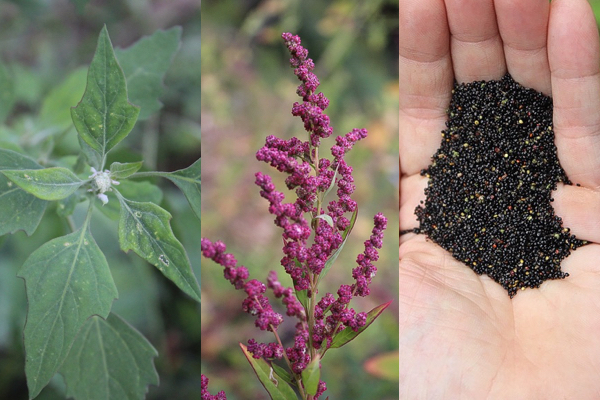
Plantain Seeds
Well known as an edible weed, the low-growing herb plantain (Plantago sp.) is usually harvested for its medicinal leaves that work as convenient field bandaids. Those same leaves are made into all manner of healing herbal salves for the treatment of minor injuries and burns.
Some adventurous foragers eat young plantain leaves, but they’re stringy and hard to chew (especially when older). The seeds, however, are easy to harvest in abundance for wild foraged flour.
The flower stalks are hard to notice, but they do put out tiny purple and white flowers in mid-summer. By late fall, they’ve matured into little papery capsules filled with seed.
Run your hand over a seed stalk, and you’ll harvest it by the handful. The paper husk capsules winnow away quickly, leaving you with plantain grain, which can be ground into flour.
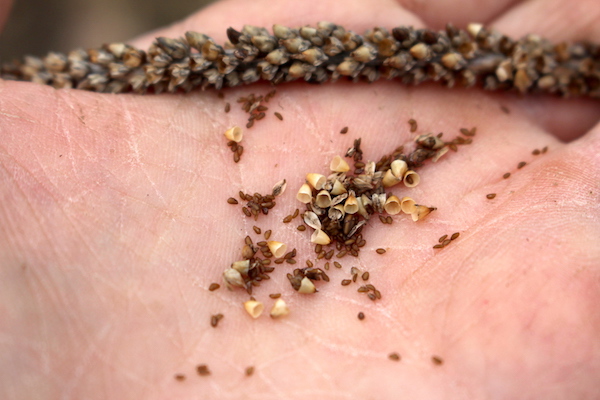
Purslane
Growing up in California, purslane was an incredibly virulent weed that thrived in the hot, dry desert soil. If I’d only known then that it was a tasty wild edible, I might have enjoyed that harvest a lot more.
These days, I actually plant purslane as a salad green, and it needs gentle tending in our Vermont climate. Go figure.
I’ve only recently learned that the seeds had been used as a wild foraged flour grain by diverse people all over the world. The Weston A. Price Foundation mentions that “The ancient Greeks made a bread flour from purslane seeds,” and other sources say that Australian aborigines ground it for flat purslane seed cakes.
That sounds like a good option for those of you in warmer dryer climates than mine.
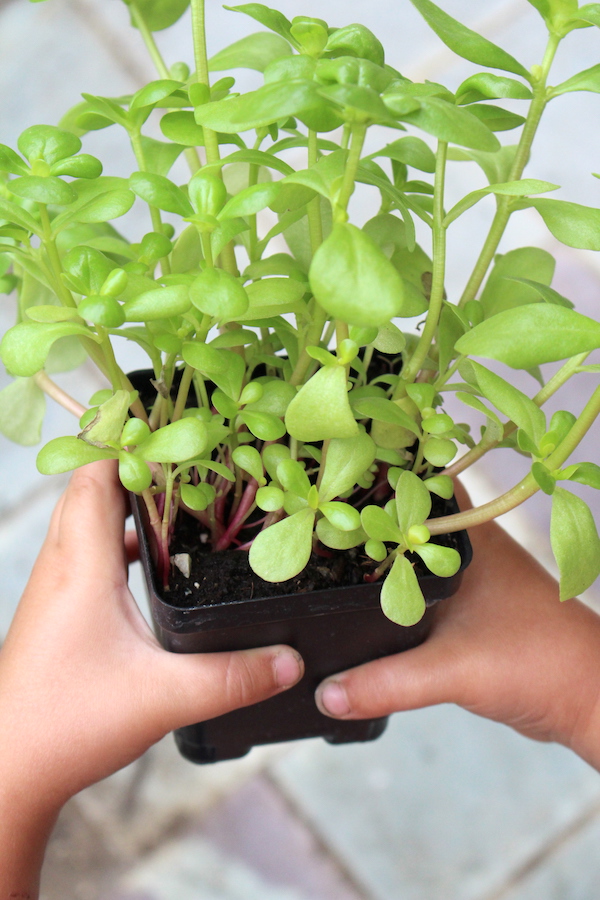
Amaranth
Also known as pigweed, wild amaranth produces tiny edible seeds and tasty edible greens. Amaranth is actually cultivated in many parts of the world, and I’ve eaten it both as a cooked grain and as amaranth flour.
Pigweed is especially vigorous and an excellent wild flour grain option where it simply can’t be eradicated.
This pigweed description from Wild Edibles is particularly appropriate:
“Mention “pigweed” in a south Georgia feed and seed, and you’re liable to hear a slew of words unfit for Sunday service. Pigweed has few friends in south Georgia or any of the farming communities that have been stricken by its glyphosate-resistant tenacity.
But mention “amaranth” in an Asheville co-op, and you’ll likely get an earful of evangelism for one of the oldest intentionally cultivated food crops that we know of.”
It’s all a matter of perspective…
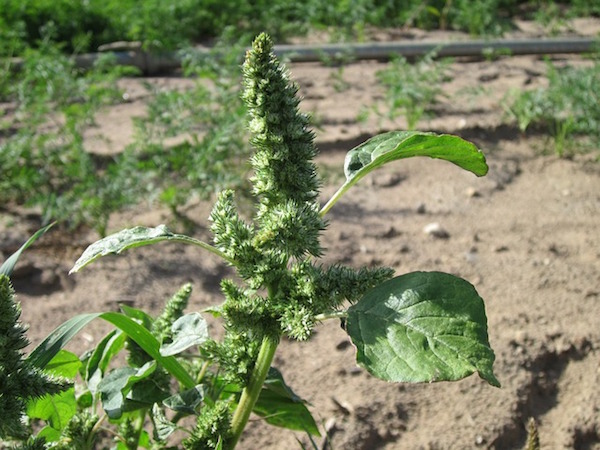
Wild Rice
Believe it or not, few people have actually tasted authentic “wild rice,” and the long black grains sold in grocery stores as “wild rice” are actually cultivated grains. True wild rice is still out there, and it can be harvested if you have a canoe and a bit of devotion.
Processing is pretty involved, but the result is one of the calorie-rich staples you can harvest from the wild. Add in a bit more processing, and you can make wild rice flour for flatbreads.
Arthur Haines has a detailed video which takes you through the whole process:
Crabgrass
Out west, Crabgrass is the bane of my mom’s existence. Every summer, she declares an all-out war on that weed, but it’s hopeless. I’m pretty sure it could survive a direct nuclear strike without blinking.
It wasn’t always an undesirable invasive weed, and this nearly indestructible grass was one of the first cultivated grains, and it’s still grown as a food crop in some parts of the world.
According to Eat the Weeds:
“While we try to get rid of Crabgrass in America in parts of Africa, Crabgrass (fonio) is a staple grain, and as forage, it can produce a whopping 17 tons per acre. Crabgrass seed can be used as a flour, couscous, or as a grain, such as in porridge or fermented for use in beer making. Now that’s a label I’d like to see: Crabgrass Beer.
Crabgrass is not only nutritious but one of the world’s fastest-growing cereals, producing edible seeds in six to eight weeks. It grows well in dry areas with poor soils, and fantastically in watered lawns. It’s a horrible weed and a wonderful edible.”
Believe it or not, it’s actually not a problem on our Vermont homestead, and I’ve yet to find it on our land, so I can’t personally attest to the flavor or ease of harvest.
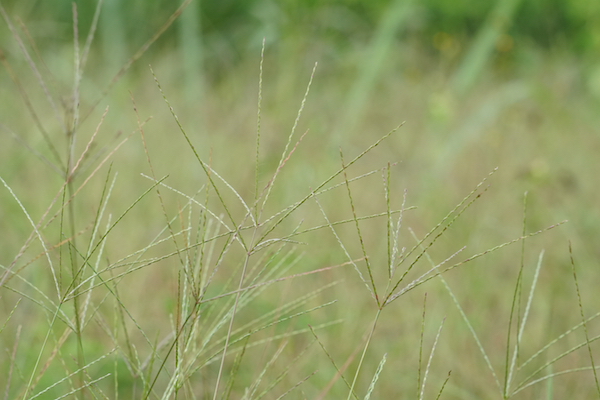
Ryegrass
A typical cover crop for home gardeners, ryegrass has escaped cultivation, and it’s now wild in many parts of the world.
There are also entirely wild strains, like Canadian Wild Rye (Elymus canadensis) that are native to cold climate regions of North America, and other wild species native to other parts of the world.
I’m particularly fond of rye flour, as it doesn’t spike my blood sugar like other types, and I use it to maintain a rye sourdough starter. I’d hoped to harvest our own wild (or cultivated) rye at some point, but that’s still a dream for the future.
Someday…
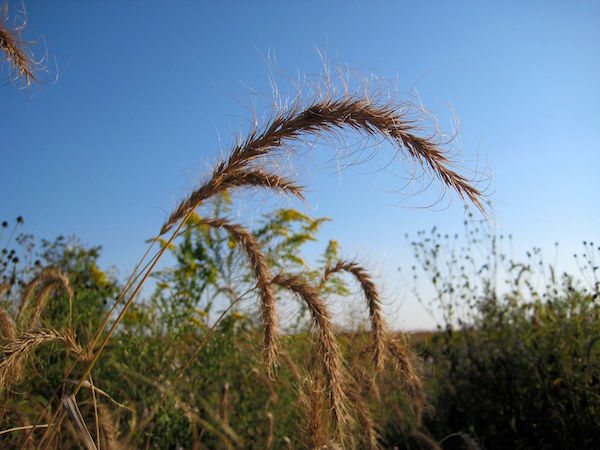
Mesquite Pods
If you live in the American Southwest, you have access to flour from mesquite beans. The trees themselves are actually legumes, like beans and peas, and they produce flat pods full of edible beans that were once used as a flour source by native peoples.
One article describes the memories of an Apache tribe member, recalling making flour from mesquite pods:
“She has vivid memories of collecting dried beans while the adults ground the pods into flour in a mortar. From there, the flour was mixed with cornmeal into hotcakes and a farina-like atole for breakfast. Dense with fiber and protein, the bean (whose name is rooted in an Aztec word, mizquitl) concentrates its sugar in the pulp between the pod’s shell and the seeds.”
Mesquite flour is actually still produced in Texas, and it’s part of the slow foods ark of taste. These days, mesquite flour is often mixed with wheat flour to create unique flavors in baked goods. One forager noted in the same article roast the pods, “then mills them into an aromatic flour that smells of cream, coconut, and chocolate. It brings a subtle earthiness to loaves such as the dark-crusted Rouge de Bordeaux sourdough he bakes.”
You can buy small sacks of it online, though it’s often marketed as a new-age health supplement as opposed to a flour.
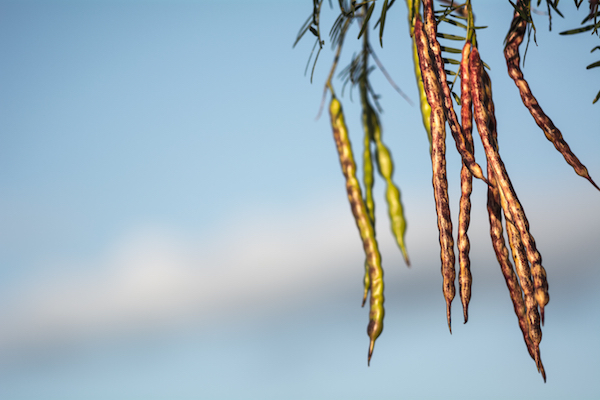
Wild Nut Flours
With the prevalence of paleo and gluten-free diets, nut flours are quickly gaining in popularity. It’s easy enough to find recipes for just about anything made with nut flour, including cookies, cakes, breads, and even nut flour pasta.
Though it may seem like a new-age diet craze, the use of nut flours is nothing new. Italian peasants have been making chestnut flour for millennia, and wild foraged acorn flour goes back to the paleolithic era in Europe, Asia, and the New World.
Acorn Flour
Though it was a traditional staple around the world, the process of making acorn flour is actually pretty involved. The acorn nuts must be leached of tannins in cold water over a period of days before they can be used as flour.
Though they take days to leach, most of the process is hands-off and completely passive. There are few dependable ways to harvest nearly as many calories from the woods than acorns (unless you’ve got a rifle handy).
The process is pretty straightforward, and I’ve got an acorn flour tutorial coming soon. In the meantime, try your hand at acorn nut butter.
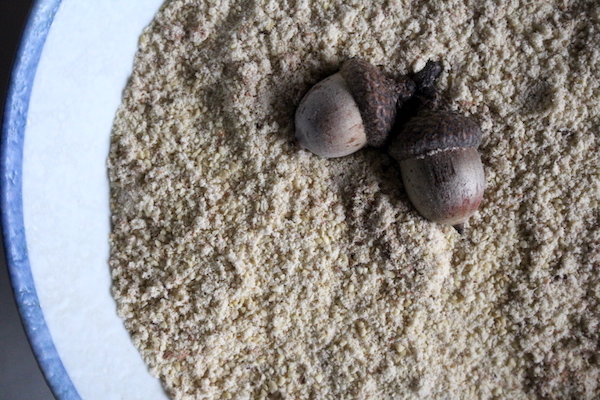
Chestnut Flour
Since they’re both sweet and starchy, chestnuts make an exceptional wild foraged flour. The process for making chestnut flour is a bit easier than acorn flour, but still more involved than ready-to-eat nuts like hazelnuts.
Start by roasting the hazelnuts, then remove the outer shell and inner papery husk. Grind the nuts and then dry the flour entirely before storage.
Italian chestnut cake (Castagnaccio) is a traditional dish that goes back millennia and was initially made with little more than wild chestnut flour, along with wild harvested pine nuts and raisins. It’s still made today, though often embellished with richer ingredients for modern palates.
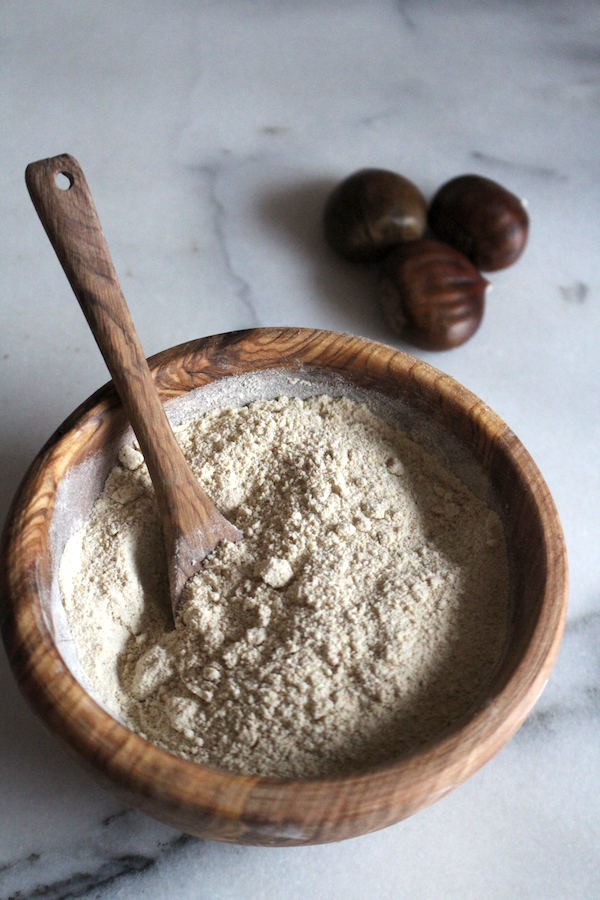
Hazelnut Flour
Honestly, this is the best-tasting wild flour I’ve ever found. Hazelnut flour is terrific, with great flavor (that obviously makes your baked goods taste like hazelnuts).
My kids are huge fans, and we use it for shortbread cookies and cakes.
They absolutely love this buckwheat hazelnut cake, which is almost all hazelnut flour with just a 1/4 cup of buckwheat. I hope to make it at some point with some wild foraged rye or maybe millet flour in place of the buckwheat.
We made a batch of 100% wild foraged cookies using hazelnut flour, along with a bit of rendered squirrel fat for a unique woodland treat…
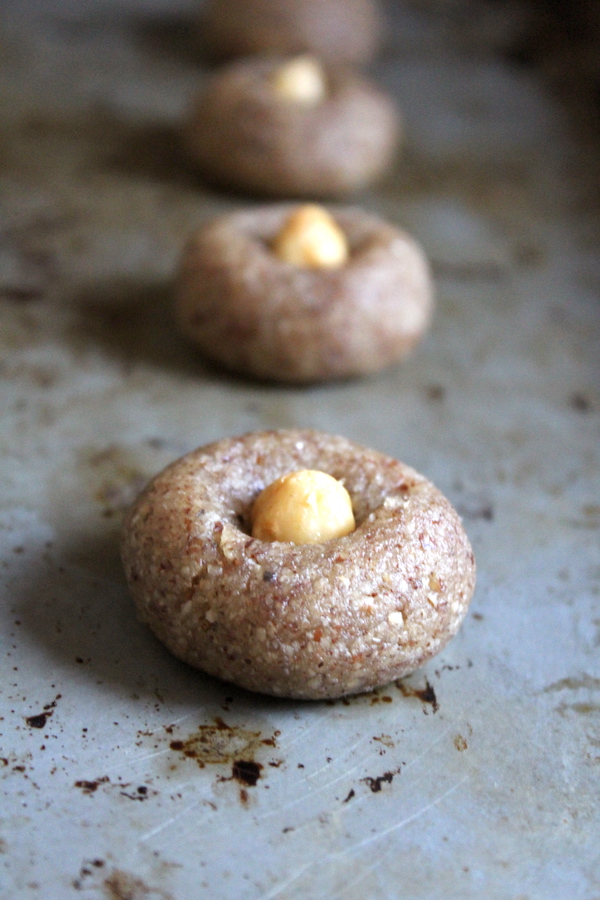
Other Wild Nut Flours
Honestly, just about any nut you can eat can be made into nut flour. Walnuts, in general, tend to be a bit bitter for flour, but walnut flour is still produced and sold. Wild black walnuts have a distinctive flavor that some hate, but if you like black walnuts, then you’d probably like black walnut flour.
Butternuts, which are similar to black walnuts but without the bitterness, are a great option.
Other nuts like wild hickories tend to be exceptionally hard to shell, and it may be challenging to get enough nut meat for a meaningful hickory flour. That said, it’s likely a lot easier to make a pound of hickory flour than it is to create a pound of purslane flour, so it’s all a matter of perspective.
Similar to hickories, but generally easier to shell, wild pecans are a great option if you can find them.
Beechnuts were harvested in mass historically, but the trees are much less prevalent today due to imported diseases. If you could forage enough, I imagine they’d make a particularly rich nut flour.
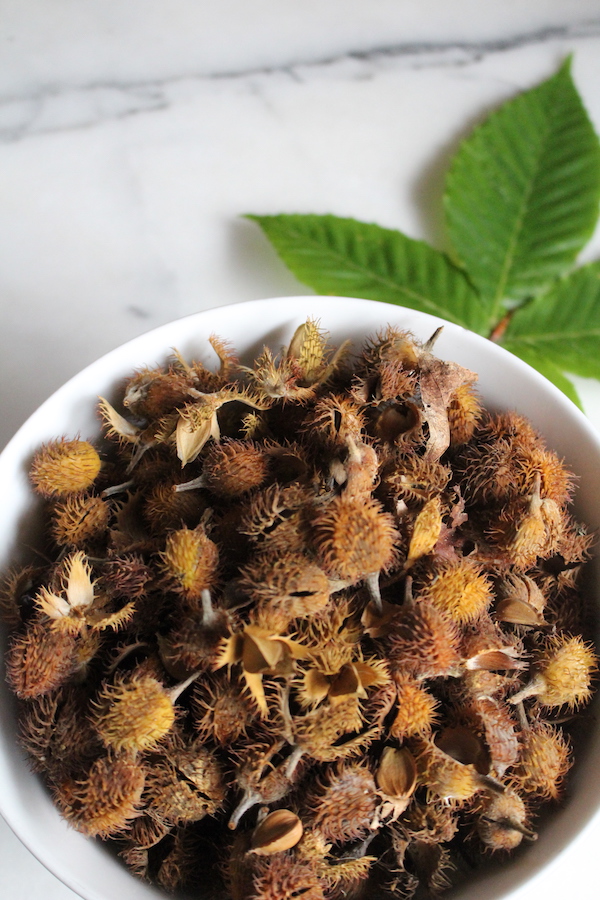
Bark Flours
I know what you’re thinking, eating bark is a horrible idea, reserved for a last resort survival situation. Believe it or not, your ancestors felt differently.
There’s plenty of historical evidence that bark flours, mainly pine and birch bark flours, were eaten in significant quantities by the richest in society, even in times of plenty.
Keep in mind that bark harvesting bark kills or maims the tree, and should only be done if the tree is already going to be cut down for other reasons.
Pine Bark Flour
Pine bark flour can be made from the calorie-dense inner bark (cambium) or nutrient-rich but calorie-poor outer bark. Both were used historically in Scandinavia. The inner bark bulked out cultivated flours to extend the harvest through the long winter, and flour made from the outer bark helped to preserve other flours and added nutrition.
We’ve used it to make both pine bark bread (delicious) and pine bark cookies (less tasty, but still surprisingly popular with the kids).
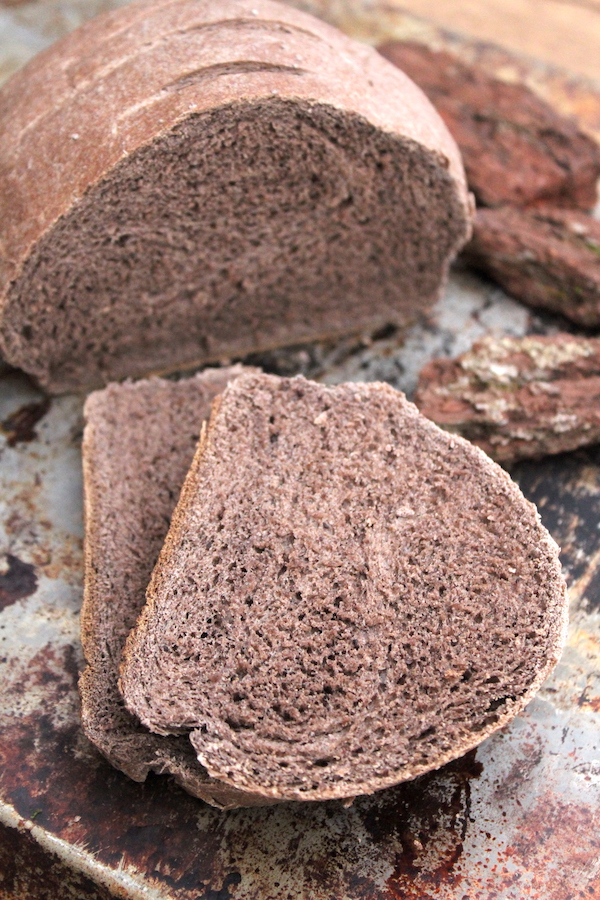
Birch Bark Flour
Unlike pine bark flour, which is made with both the inner and outer bark, birch bark flour is generally only made with the nutrient-rich inner bark.
The outer bark is reserved for containers and baskets, and it’s used in whole sheets to help preserve food. Traditional gravlax was buried wrapped in birch bark both for flavor and for preservation, as the natural oils helped prevent spoilage and repel pests as the fish cured. We’ve made it, it’s delicious, and adding in spruce tips for flavoring puts the gravlax it over the top.
Inner birch bark is surprisingly delicious and was traditionally processed with reindeer milk by the native peoples of northern Scandinavia. We made our own birch bark flour and found that it tasted a bit spicy, and a lot like buckwheat.
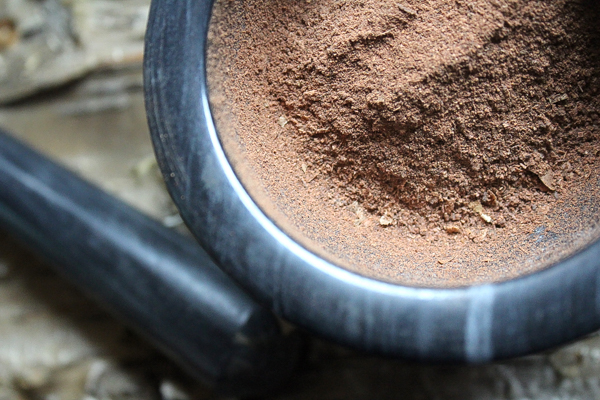
Other Bark Flours
While pine and birch bark are by far the most commonly used, there are many trees with cambium (inner bark). Good examples are maple trees, though those are better saved for making maple syrup or growing shiitake mushrooms.
Linden tree cambium was used historically as a wild foraged flour, as was tamarack cambium.
Pollen Flour
Plant pollen is a high protein source of nutrition and micronutrients. It can be harvested in great quantity, especially in the spring.
While some plant pollens are used as flavoring (i.e., wild fennel), others have a much milder taste and are a wild flour substitute.
Pine Pollen
Readily available in the spring, pine pollen can be harvested anywhere pines are abundant. There are a few weeks each year that you could almost scrape enough off your sidewalk to bake cookies.
Try making pine pollen pasta; the recipe just substitutes a bit of pine pollen in place of semolina in a basic homemade pasta recipe.
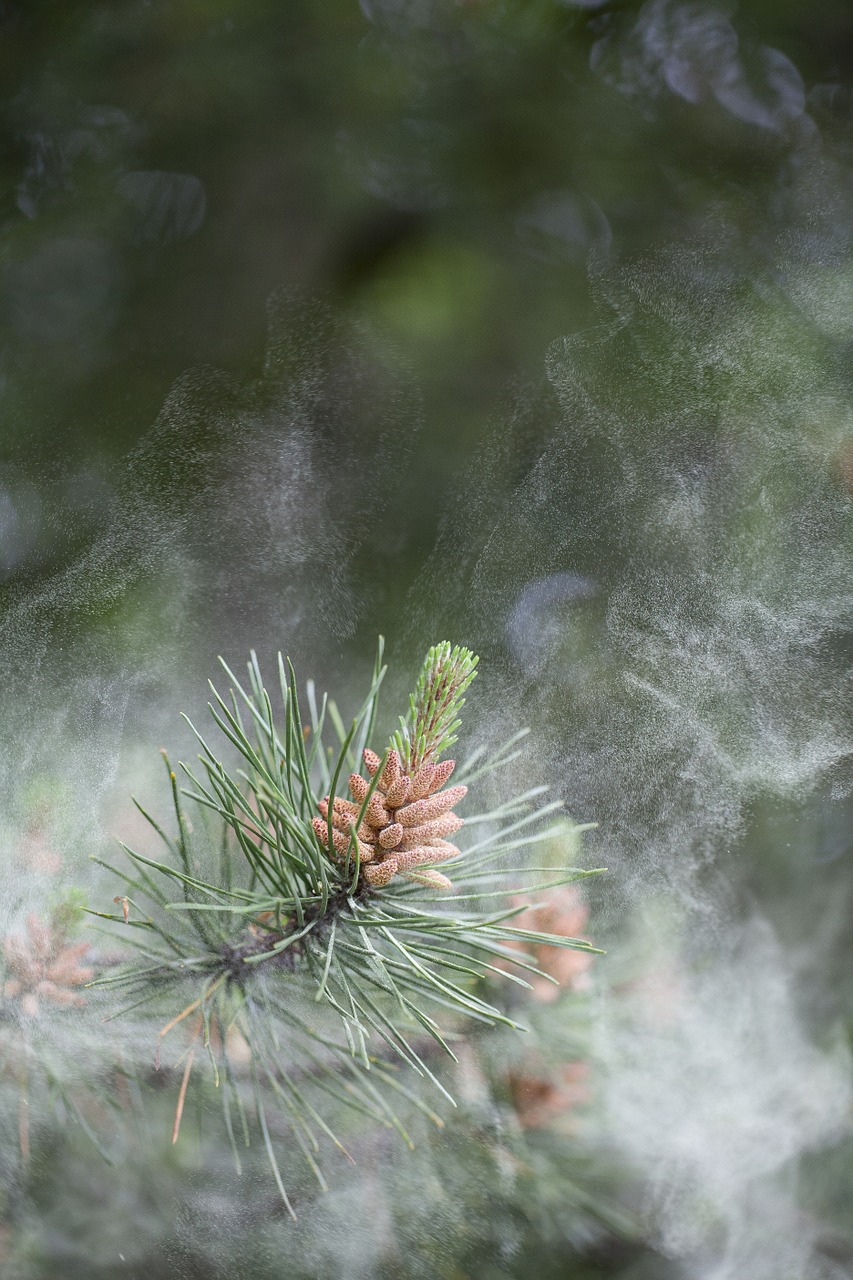
Cattail Pollen
Like pine pollen, cattail pollen is incredibly abundant for a few weeks of the year. Sam Thayer describes collecting it using a milk jug with a hole cut in the side. Just bend the stalk over, put it in the milk jug, and shake.
Try cattail pollen bread or make it into cattail pollen pancakes.
Root and Ryzome Flours
The starchy roots and rhizomes of perennial plants are an excellent wild flour source. The plant uses those below ground structures to pack away nutrition for the future, making it a convenient source of dense nutrition.
Cattail Rhizome Flour
Foragers know cattails are something of a wonder food. Readily anywhere with surface runoff and marshy spaces, cattails are incredibly prolific. Every part of the plant is edible, providing a diverse array of foods throughout the season.
The young shoots are tasty vegetables and make excellent cattail shoot pickles. The pollen has already been discussed as a flour source, but it has a short season.
Cattail rhizomes, however, are hiding under the mud year-round.
The process of extracting flour from cattail rhizomes requires patience and a good bit of water, but if you’ve got cattails, that means you’re already in a wet climate.
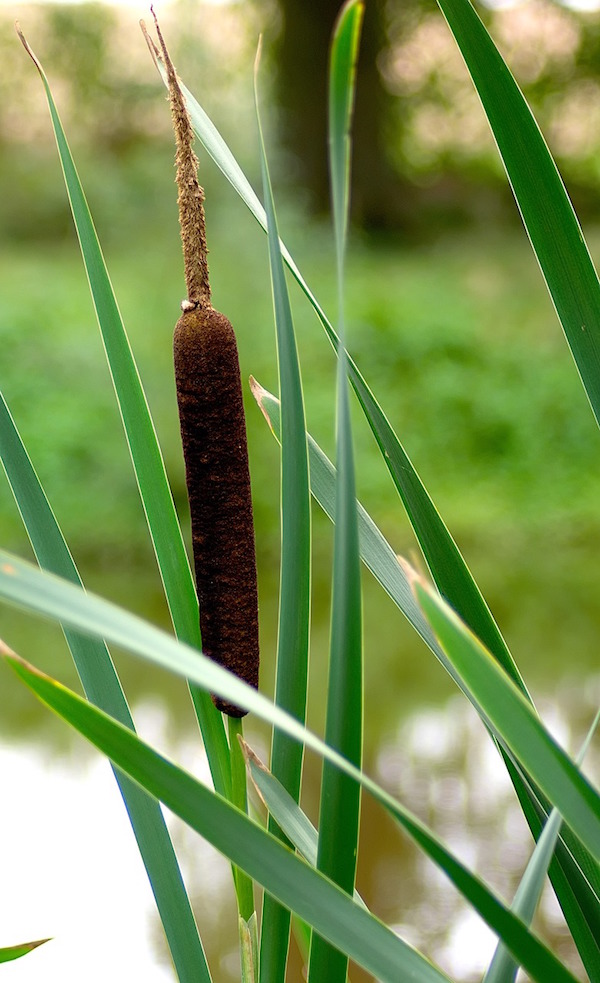
Burdock Root Flour
Another incredibly prolific wild plant, burdock roots make a readily available wild flour source. The problem is, it’s not particularly digestible.
Researchers are actually studying burdock root flour as a “healthy” alternative to conventional flour that can be used to lower the calories in baked goods.
While the starch isn’t particularly digestible by humans, it passes through to the digestive tract to feed our intestinal flora as a “prebiotic” nutrient. Researchers found that they could replace about 15% of the flour in cookie recipes with burdock root before consumers noticed a difference.
If you’re making wild foraged flour, likely limiting calories is your last concern, but keep it in mind as a source of prebiotic nutrients to help with digestion.
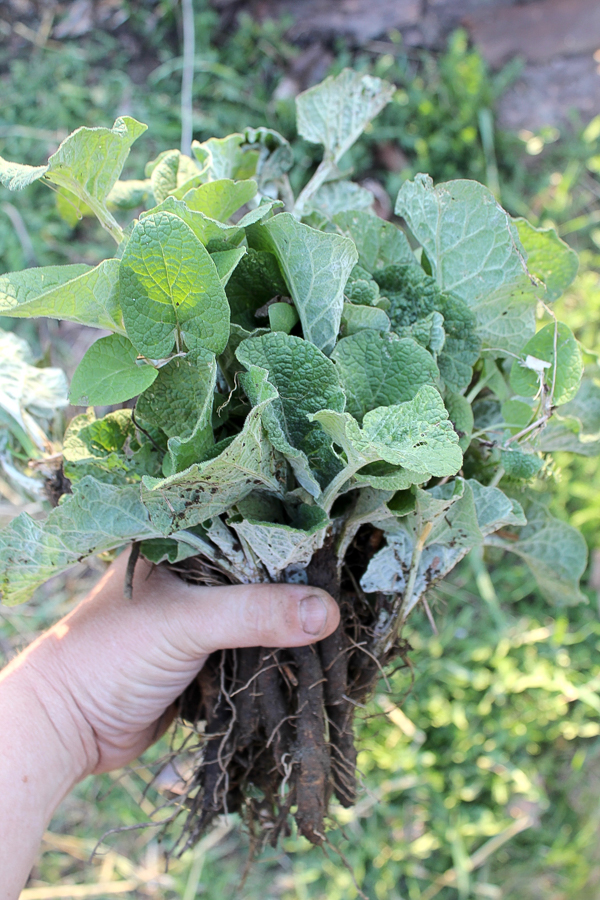
Sunchoke Flour
Similar to burdock roots, sunchokes (also known as Jerusalem artichokes or topinambur) produce a starchy root that’s full of prebiotic fiber.
The plants themselves are nearly impossible to kill, and they can take over vast swaths of land in their native range. We planted sunchokes in a clearing in our woods, as a way to contain them. They grow and spread just about anywhere, but they cant take dense shade, so the trees make a natural fence.
While you can harvest sunchokes in great quantity, generally, they’re considered a lower-calorie potato substitute. Sunchoke flour is produced and sold as a dietary supplement to reduce calories in baked goods and add prebiotic nutrients.
If you’re looking for a recipe, try these sunchoke flour beignets.
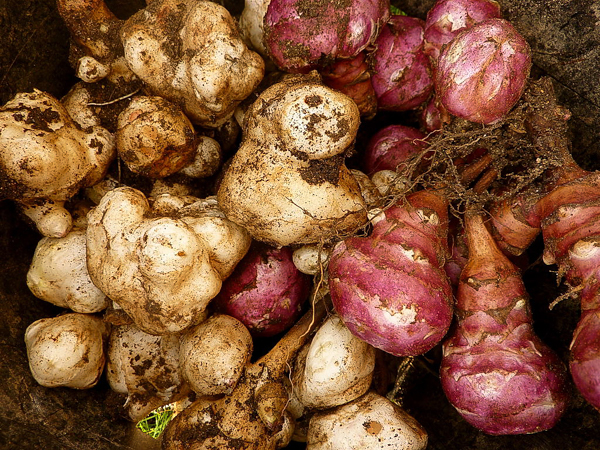
Wild Parsnip Flour
While I’ve harvested and cooked wild parsnips for their tasty roots, it never occurred to me to make them into flour. One of my readers recently commented that they make homemade pasta from scratch using wild parsnip flour, and now I’m curious:
“I make flour from wild parsnips I forage, and it makes great cakes, brownies, and noodles, but it does not make good bread. I think the noodles made from the parsnip flour taste better than those made with wheat flour.”
Another one to try!
Other Wild Flours
In the process of researching this article, I came across so many references to wild plants you can make into flour, more than I’ve had the opportunity to research thoroughly, let alone test. Flour from lichen, green plants like clover and even dried wild apple pomace, along with flour from the seeds of dozens of varieties of wild plants.
Here are a few more options for you, and I’d love to know if you have experience working with any of these wild flour sources:
- Apple Flour ~ Apparently, this one is actually produced commercially and is used for baking.
- Catkin Flour ~ I’ve seen multiple sources claiming that the male flowers (catkins) of various trees and shrubs can be ground and used as a flour source. Apparently, this was common during famine and wartime situations, namely in Brittian during WWII. I’ve eaten hazelnut catkins fresh, and they have a pleasant flavor that I imagine would translate well if dried and ground into flour.
- Clover Flour ~ Ground clover blossoms can be used as a flour substitute. I’ve tried this one, but you can only use a small portion of the total flour, and it turns your baked goods green (and imparts a lot of flavor).
- Lichen Flour ~ Icelandic moss (which is actually lichen) is still used in baking in some parts of the world. It’s first processed with wood ash and then dried and ground into flour. Reindeer moss is also traditionally used.
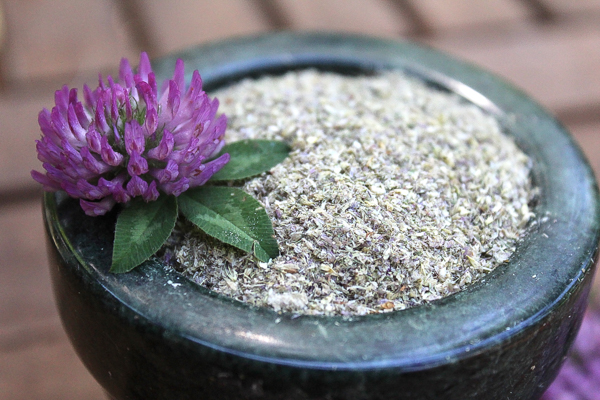
Beyond these sources, I came across a list of wild flour sources in one of my field guides, Edible Wild Plants of Eastern/Central North America.
I’ve yet to pour over the processing and practicality of many of the plants listed, but I’m putting it here for reference. I know some of these plants are now listed as toxic, and may just be listed because I have an old field guide (1977) or because of their traditional use even with mild toxicity. Please do your own research before using, as you should, when working with any wild plants.
They list the following plants as sources of wild flour:
- Amaranth
- American Beech
- American Lotus
- Arrow Arum
- Balsam Fir
- Birches
- Black Medic
- Blue Vervain
- Buckbean
- Cattails
- Carrion-flower
- Chestnut
- Clovers
- Chufa
- Eastern Hemlock
- Golden Club
- Great Bullrush
- Greenbriers
- Hazelnut
- Hickories
- Icelandic Moss
- Jack in the Pulpit
- Kudzu
- Lambs Quarters
- Large Cane
- Pickerelweed
- Pines
- Prickly Pear
- Purslane
- Reindeer Moss
- Slippery Elm
- Spruces
- Sunflower
- Tamarack
- Wild Rice
- Water Lillies
- Walnuts
- Wild Calla
- Yellow Pond Lillies
- Wild Calla
- Water-shield
Of all the wild flour options discussed, seeds and grains are some of the least practical options. Most are very small and require extensive processing before they can become flour. Even then, it’s tough to harvest more than a handful at a time.
Acorn flour also requires a lot of processing, but it’s possible to harvest enough to feed your family all year from just a few trees. It’s also highly nutritious and bakes up wonderfully.
Other nut flours are also good options, provided you can beat the squirrels to the harvest.
Pollen flours are highly nutritious but only available for a short time. Root and rhizome flours are a better option, given that they’re available much of the year, and you’re not competing with wildlife for that nutrient source.
Other Wild Edible Plant Lists
Looking for more lists of wild edible plants you can forage?
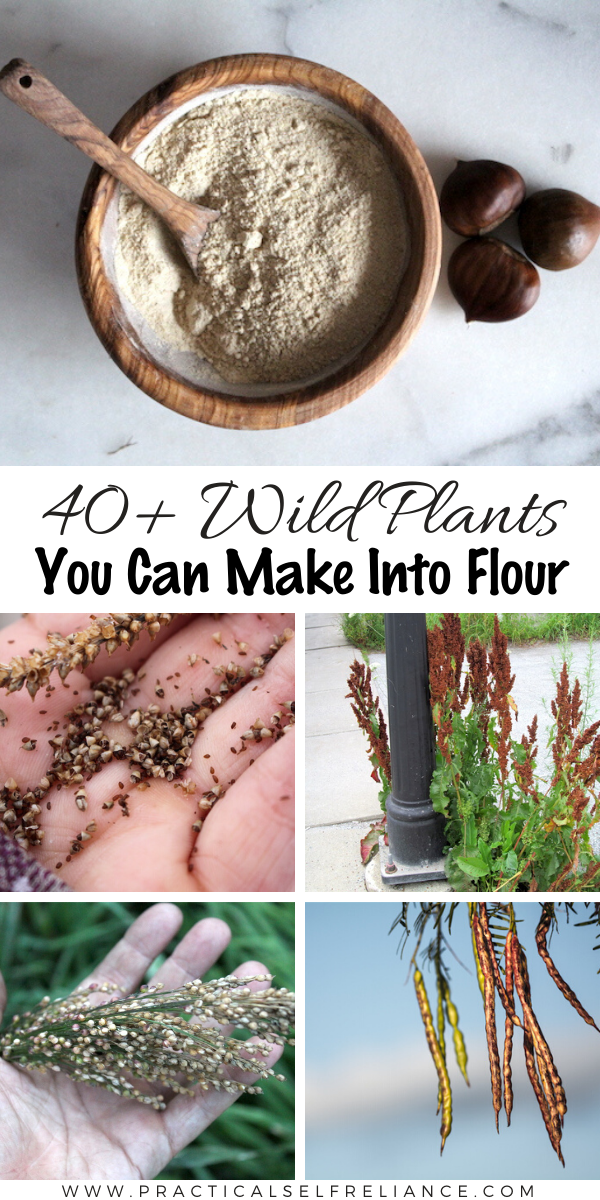


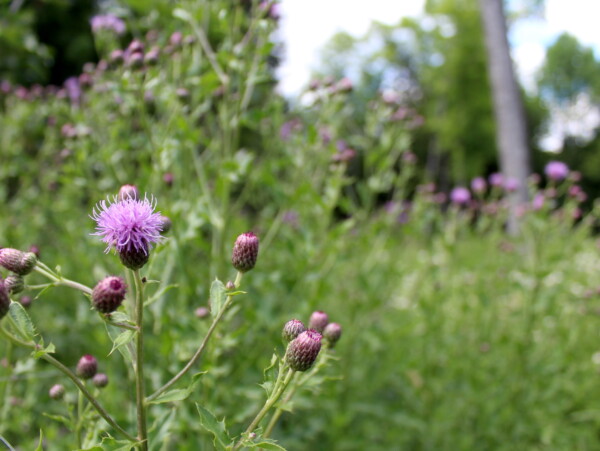
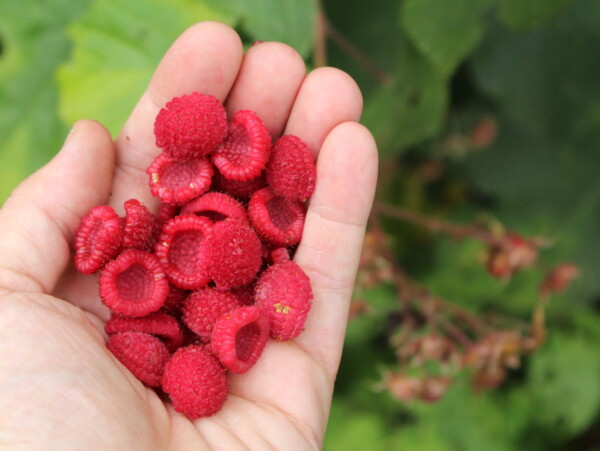
Apparently dried zucchini makes Amish Flour! Just learned that recently and made about a cup of it to add to my sourdough bread. Also regarding wild parsnip. Is that the same parsnip whose stem juices cause skin blisters and scarring?
Yes it is. This reaction is called phyto-photo-dermatitis and is caused when the sap gets on the skin and is then exposed to uv light. So as long as you don’t get the sap on the skin and also expose the skin to uv light then you’re fine.
I recently read that amaranth leaves could be dried and ground into flour, so I plan to try that soon. I’m loving learning about many different plants to forage for flours! ☺️
Is this information in your book?
We do not have a book at this time.
My main concern a.k.a. question. Here is in regards to these different flour we can make. How are we to know which each type of flour having tasted it nor made something like this how we did yeah what do we do with measurements and you take a basic white recipe for bread and use it with any of the flowers or what I really am into this I really want to get into it but I need so a little bit of help. Thank you kindly.
I would say that if you are new to it, you n can research it and see what others have done. If you are unable to find something that someone else has done, then you can just experiment with it in small batches to see what works and what doesn’t. Then feel free to share what you have learned. There are lots of great recipes here on the blog to get you started.
Add bird cherry flour to your list! Traditional in Ukraine, could still get online before the war. But you can make your own from whole dried cherries. It makes a wonderful cherry-almond flavored flour and a dense cake that keeps well. the drying and baking renders the toxins in the pit safe. Alan Bergo at Forager Chef online has a great recipe.
This sounds really lovely. Thank you so much for sharing.
Love your articles! I’m looking for a good hand cranked grain mill. Is there one you would recommend?
I’m sorry we don’t have a good recommendation for that. Let us know if you come across one that you would recommend.
Can the shell of Hickory nut also be used to make a flour right along with the nut ? If so.. how?
I absolutely loved this article. Well written….easy flow..to the point with a dash of wit and down to earth.
I hope you put a book together. Ps thank you for adding photos.
I don’t know about using the shell for flour but I have read that you can use them in your grill or smoker for flavor. You can also use the shells to make syrup.
Fantastic. Thank you
You’re welcome.
Do you recommend any other books for learning more about wild plants that can be made into flour besides Edible Wild Plants of Eastern/Central North America for Vermont and upstate New York? I really appreciate this article! This information is super helpful! It would be cool if I found a few books I could reference without internet access.
The best foraging books I’ve ever found are by Sam Thayer. He has three thus far, all are spectacular.
I love your info, do you also have a book? We don’t have internet access in my area and I really do prefer to grab a book than to try to read on my phone screen. Thank you
I don’t at this time. Maybe one day!
Warning on pine pollen and kudze blossoms: both are serious allergens. Clover sounds interesting–high fiber, flavor, and availability. Wonder how it would be for breading fried veggies?
Amazing post! plenty information. I really enjoyed It!
Another great article, I loved it. I found nut flours are great for making cakes but if you are going to store them boil them in hot water first to get the oils out. I found wild parsnip flour makes fantastic pasta. I have also used turnips to make flour and they also made great pasta.